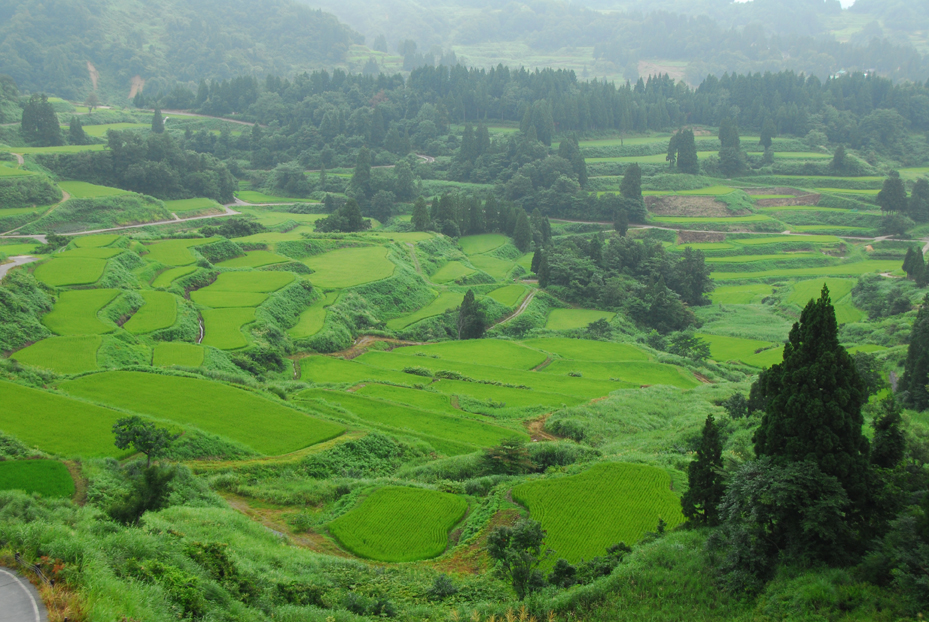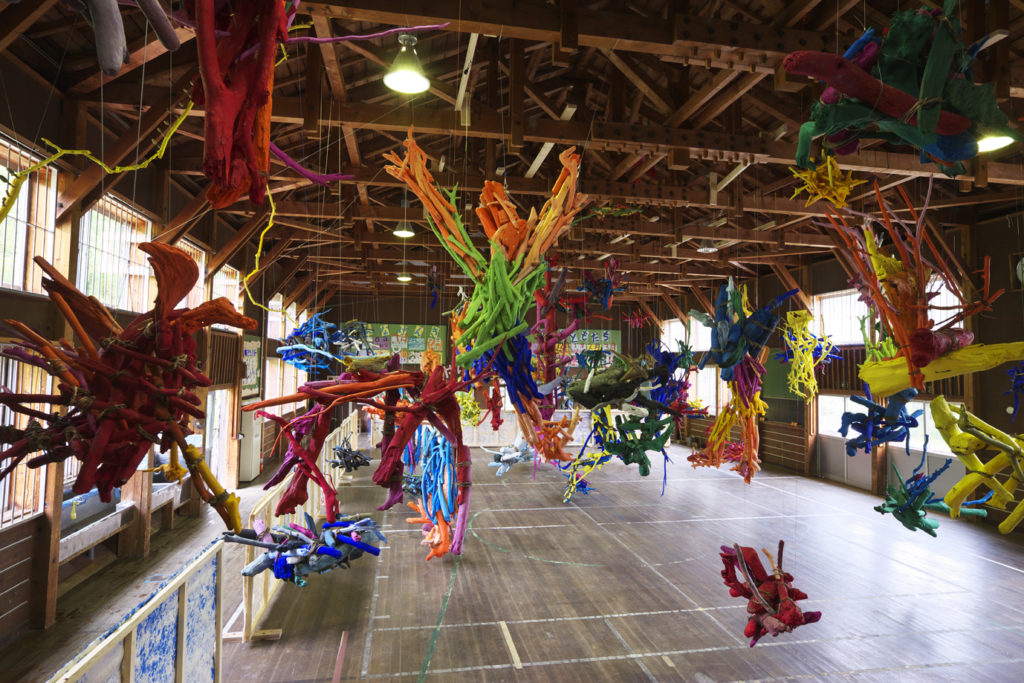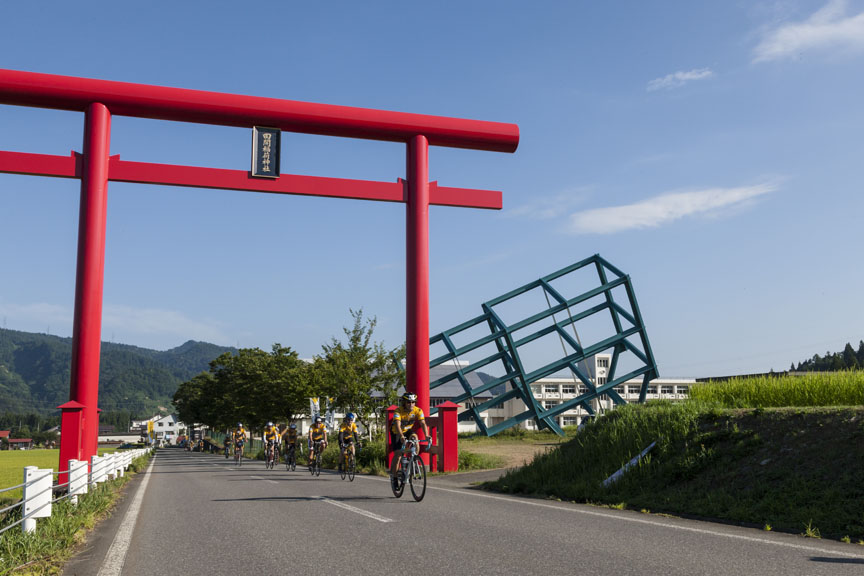At the base of Niigata Prefecture lies the mountainous region of Echigo-Tsumari. The beautiful 760 sq.-kilometer area fully embraces Japan’s four seasons. The landscape here shifts from bright green terraced rice fields in summer to fiery autumn hues, from endless white plains blanketed in some of Japan’s heaviest snowfalls to soft pastels as sakura burst into full bloom, dotting the hills in spring.

The term satoyama refers to the area between mountain foothills and farmlands. Small-scale agriculture in these regions has been sustainably developed over centuries, and Echigo-Tsumari’s agricultural history dates back 4,000 years. Like most farming regions scattered across the country, Echigo-Tsumari has an aging population.
Each year young residents gravitate toward urban areas to pursue modern job opportunities, leaving behind a venerable ghost town of closed-down elementary schools and abandoned houses, as well as a social gap between locals and the occasional visitor.
In 1994, Niigata proposed an expansion plan to bring visitors to the area through art. Art director Fram Kitagawa, who hails from the neighboring region of Joetsu, decided to revive Echigo-Tsumari by turning it into an open-air art exhibition. The international Echigo-Tsumari Art Triennale started in 2000 with 153 works of art and, over 15 years, has become one of the world’s largest art festivals.
Bound by the simple theme that “Humans are part of nature,” artists work with and connect with locals; after all, it is their landscape that is the canvas. In return, they strive to reflect that collaborative relationship, spanning generations and cultural backgrounds, to the audience.
Today, almost 200 installations by artists from the world over are spread out among Echigo-Tsumari’s 200 villages in 10 sections. This deliberately forces visitors to travel, wander and appreciate nature, the inspiration of these artworks. Over the years, old schools and homes have been renovated into museums, cafés and even inns.

The “Shedding House” gets its name from the countless carvings etched in the wooden floors and walls of this abandoned 200-year-old building, signifying the carvers’ shedding of their old self while appreciating the traditional elements as well as the changing community of the region.
Visitors can stay at this traditional Japanese house between late April and early November for ¥3,000 a night per person (reservations required), and enjoy a homemade meal from a nearby restaurant that uses locally sourced ingredients. This house overlooks the wide steps characteristic of the rice fields of Hoshi Toge Village.
Matsudai Tanaba Bank was started to help aging locals with their farming industry. Every year, a group of volunteers assist in harvesting the rice. Ironically enough, most of the younger volunteers are city folks seeking an escape from the corporate life. To them, Echigo-Tsumari is more than an art field – it is a creative community and, for some, a new home.
For visitors who want to sneak in some hiking or water activities during the trip, Oregon-based shoe company KEEN, one of Echigo-Tsumari’s sponsors, will be renting out trekking shoes at its exhibit, “Deai,” which is near Mt. Akiyama. Shoes are then returned at Kinare Matsudai Station. Four designs of their waterproof shoes are inspired by exhibits.
“We’re not just installing art for the sake of aesthetics. Each piece is meant to connect viewers with the surrounding nature. The artwork and its environment go hand-in-hand,” says Tomoko Yamaguchi, who is part of NPO Echigo-Tsumari Satoyama Collaborative Organization. She helps harvest rice in the summer and clears the rooftops from snow in winter.

“It’s hard work and, honestly, I thought I was going to die (from shoveling snow),” she laughs. “But I love seeing the results of cultivating Echigo-Tsumari.”
The Echigo-Tsumari Art Triennale 2015 is held from July 26 to Sept. 13, but the art field is open year-round. It may take art enthusiasts nearly a week to fully cover the whole exhibition. However, if you don’t have that much time, you can pick and choose which exhibits to see, and there are English-speaking tours. In addition, a slew of cultural performances, traditional festivals, local cooking and art workshops will be held throughout the Triennale.




